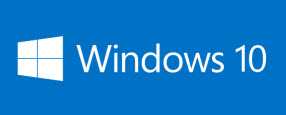Microsoft's Windows monetization plan: Services are the new 'attach'

There's been a lot of parsing of recent comments by Microsoft Chief Operating Officer Kevin Turner regarding how Microsoft plans to monetize Windows, going forward.

If you read Turner's actual words (from a transcript of his December 4 Credit Suisse Technology Conference appearance), you'll he's saying Microsoft will be bringing "additional services" to Windows.
Credit Suisse analyst Phil Winslow asked Turner if Microsoft was willing to start losing money on Windows. Turner's response:
"... That's not any conversations that we've had. The thing about it is, though, we've got to monetize it differently. And there are services involved. There are additional opportunities for us to bring additional services to the product and do it in a creative way. And through the course of the summer and spring we'll be announcing what that business model looks like."
What are these "additional services" of which Turner speaks? Turner says we'll find out in the early part of 2015, when Microsoft talks turkey about the new business model for Windows, starting with Windows 10.But if I were a betting woman, I'd say Office 365, OneDrive, MSN, Skype, Xbox Live Gold, Xbox Music Pass and other evolving consumer and business services.
Some of these services are currently paid; some are free. But Microsoft execs know that once a customer is hooked into one of these services, s/he is a lot less likely to abandon Microsoft in favor of a competing platform. And even when customers are using something free like OneDrive storage, the connection to Microsoft gives the company a chance to upsell them and try to get them to use paid services.
(See that Work & Play bundle of Office 365 Home, Xbox Live Gold, Xbox Music and Skype Wifi -- which is normally priced at $199 but is available for a temporary holiday discount price of $149? Expect more bundles like that....)
As Turner told the Credit Suisse crowd, in the good old days, Windows was a real gravy train for Microsoft. It was the product that fueled the growth of many of the other businesses at the company. The old business model was all about "attach," Turner explained.
The old Windows model was "attach our software to as many sockets as we can, and it was license focused. And the beautiful thing about the old-world business model was that, hey, as a customer bought our software, we got paid 100 percent of it upfront and we got paid regardless of whether they used it or not," he said.
These days, on devices under 9 inches in screen size, Microsoft isn't making money from its Windows OEMs like it used to since it began offering them Windows for "zero dollars" to compete with Android. On devices larger than that, Microsoft is making some money from OEMs using cheaper Windows plus Bing SKU. It still makes quite a bit of money on Windows SKUs that its business users buy via volume licensing programs and Software Assurance, and probably will continue to do so with Windows 10.
But where the old model broke down was in giving Microsoft an ongoing relationship with its users. Once users bought their Windows PCs or copies of Windows at retail, Microsoft didn't have much to do, if anything, with those users (unless they bought additional Microsoft products to run on/with those Windows devices).
Starting with Windows 10, Microsoft will build Windows in a way that it includes hooks into its own services. Because Microsoft owns the Windows shell in a way that it doesn't own the Android or iOS or Mac OS shells, it can do things like integrate the Store into the Start Menu so that the OS can suggest a particular app to a user or to offer a better photo experience using OneDrive to Windows users than on competitive platforms.
It's definitely an untried and unproven path for Microsoft, and one that requires the company to prove that there's still a reason to choose Windows over the other mobile OSes the company is supporting. But that's where the company seems to be headed.